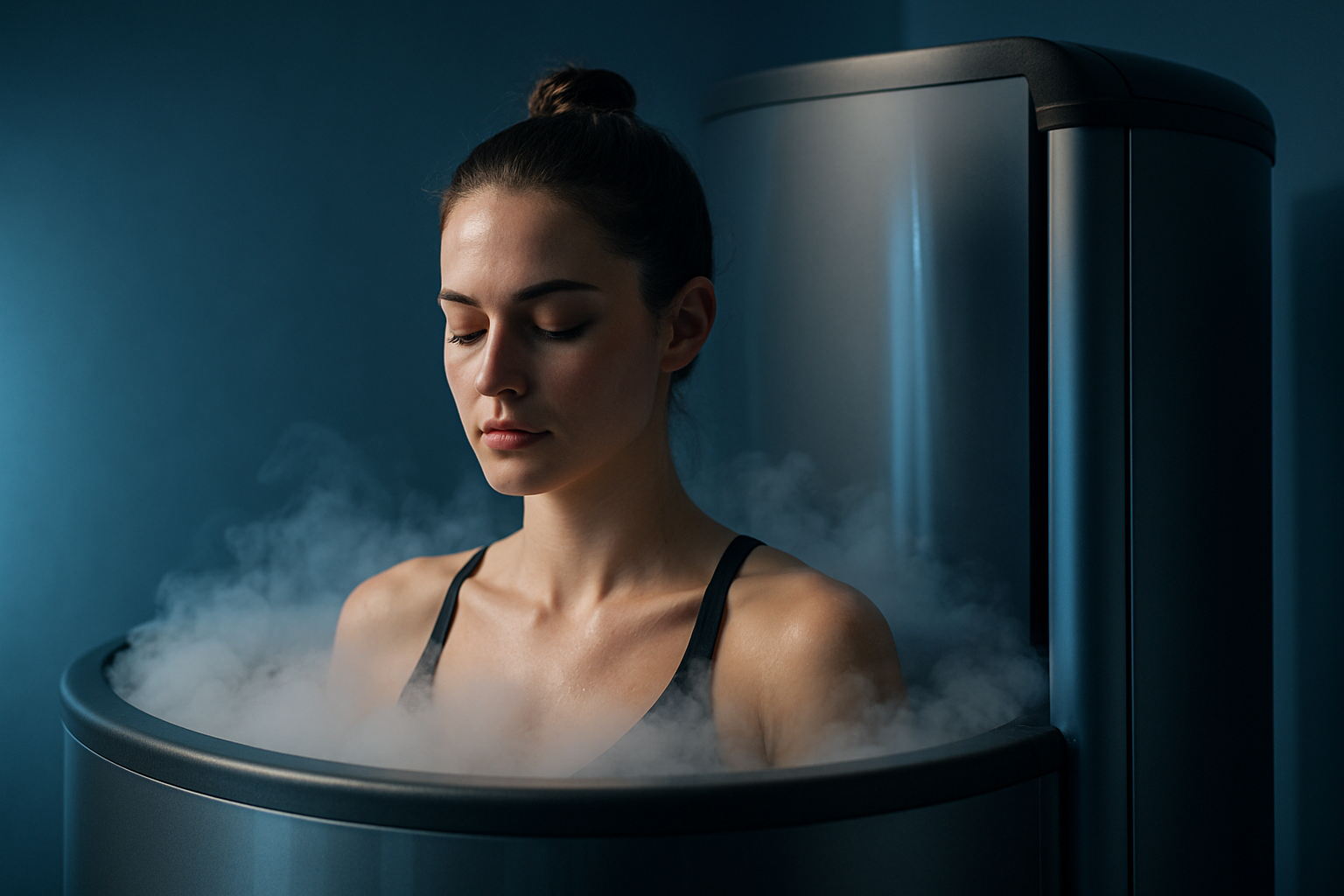Cryochamber Craze: The Science and Sensation of Extreme Cold Therapy
Imagine stepping into a chamber so cold it makes the Arctic seem balmy. Your skin tingles, your breath quickens, and for a brief moment, time seems to stand still. This is the world of cryotherapy, a cutting-edge wellness treatment that's capturing the attention of athletes, celebrities, and health enthusiasts alike. Far from being just another fleeting fad, cryotherapy is rooted in centuries of cold therapy practices, now supercharged by modern technology. As the beauty and fitness industry continues to evolve, this extreme cold treatment is emerging as a powerful tool for recovery, rejuvenation, and overall well-being. But what exactly happens when we subject our bodies to temperatures as low as -200°F, and why are people willingly paying to freeze themselves?

The concept was pioneered by Japanese rheumatologist Dr. Toshima Yamauchi, who used extreme cold to treat rheumatoid arthritis. His method involved brief exposures to temperatures well below freezing, which he found reduced pain and inflammation in his patients. This breakthrough laid the foundation for the development of cryotherapy chambers, which first appeared in Japan in the 1980s before spreading to Europe and eventually the United States.
The Science Behind the Freeze
At its core, cryotherapy works by triggering the body’s natural survival mechanisms. When exposed to extreme cold, the body redirectes blood flow from the extremities to the vital organs, a process known as vasoconstriction. This physiological response is believed to have several beneficial effects:
-
Reduced inflammation: The cold exposure causes blood vessels to constrict, reducing blood flow to inflamed areas and potentially decreasing swelling and pain.
-
Endorphin release: The body releases endorphins in response to the cold stress, which can lead to improved mood and pain relief.
-
Metabolic boost: As the body works to rewarm itself after treatment, it burns calories, potentially aiding in weight management.
-
Enhanced recovery: Athletes report faster recovery times and reduced muscle soreness after intense workouts when using cryotherapy.
-
Skin rejuvenation: The cold temperatures are thought to tighten the skin and stimulate collagen production, potentially reducing the appearance of fine lines and wrinkles.
The Cryotherapy Experience
A typical whole-body cryotherapy session lasts between two to three minutes. Participants enter a chamber wearing minimal clothing, often just gloves, socks, and underwear. The chamber is filled with nitrogen vapor, which rapidly cools the air to temperatures between -200°F and -300°F. Despite the extreme cold, the dry air and short exposure time prevent frostbite or tissue damage.
Many users report feeling invigorated and energized after a session, with some describing a rush of endorphins similar to a “runner’s high.” The immediate effects can include reduced pain and muscle soreness, improved mood, and increased energy levels. Long-term users claim benefits ranging from improved sleep quality to enhanced athletic performance and accelerated recovery from injuries.
The Rise of Cryotherapy in the Beauty and Fitness Industry
In recent years, cryotherapy has transitioned from a niche treatment for elite athletes to a mainstream wellness offering. Cryotherapy centers are popping up in major cities worldwide, and the global market for cryotherapy is projected to reach $5.6 billion by 2024, according to a report by Grand View Research.
The beauty industry has also embraced the cold, with cryofacials becoming increasingly popular. These treatments use localized cold therapy to tighten pores, reduce puffiness, and promote a more youthful appearance. Some high-end spas now offer cryotherapy body contouring, claiming it can help sculpt the body and reduce cellulite.
Risks and Controversies
Despite its growing popularity, cryotherapy is not without its critics and concerns. The FDA has not approved whole-body cryotherapy for any medical purpose, citing a lack of evidence for many of the claimed benefits. Some experts warn that the extreme cold could potentially worsen certain conditions, such as high blood pressure or heart problems.
There have also been rare but serious incidents associated with cryotherapy, including cases of frostbite and even a fatality due to asphyxiation in a poorly monitored chamber. These incidents underscore the importance of proper safety protocols and trained supervision during treatments.
The Future of Freeze: Innovations in Cryotherapy
As research into cryotherapy continues, new applications and technologies are emerging. Targeted cryotherapy devices for home use are becoming available, allowing users to apply cold therapy to specific areas of the body. Some companies are exploring the combination of cryotherapy with other treatments, such as light therapy or electrical stimulation, to enhance its effects.
In the medical field, researchers are investigating the potential of cryotherapy in areas such as cancer treatment and neurological disorders. While much of this research is still in its early stages, it points to a future where cold therapy could play an increasingly important role in both wellness and medical treatments.
As the cryotherapy craze continues to gain momentum, it’s clear that this icy treatment is more than just a cool trend. With its roots in ancient healing practices and its eye on future innovations, cryotherapy represents a fascinating intersection of tradition and technology in the pursuit of health and wellness. Whether it’s the next big thing in beauty and fitness or simply a passing fad remains to be seen, but for now, the chill is definitely on.





